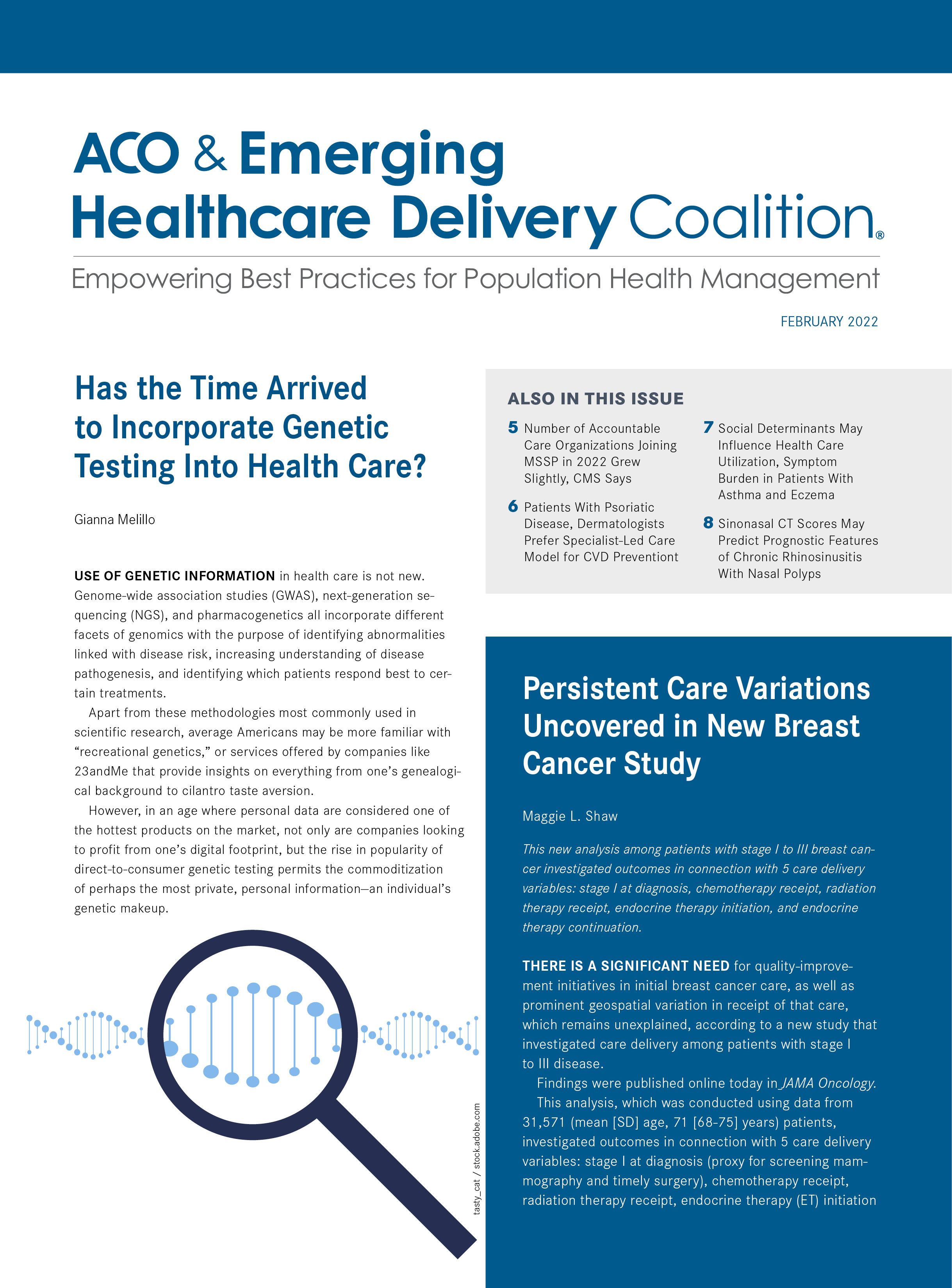- Center on Health Equity & Access
- Clinical
- Health Care Cost
- Health Care Delivery
- Insurance
- Policy
- Technology
- Value-Based Care
Sinonasal CT Scores May Predict Prognostic Features of Chronic Rhinosinusitis With Nasal Polyps
Sinonasal CT scores were associated with several prognostic features in the disease course of chronic rhinosinusitis with nasal polyps, including blood eosinophil counts and risk of relapse after endoscopic sinus surgery.
Prognostic features and treatment outcomes in chronic rhinosinusitis with nasal polyps (CRSwNP) may be predicted by sinonasal CT scores, according to study findings published in Tomography.
In understanding the pathophysiology of CRSwNP, rhinologists consider the condition to consist of several endotypes that differ in disease recurrence risk and require targeted follow-up protocols and postoperative treatments.
With CT serving as the most common imaging modality in CRSwNP for the evaluation of inflammatory sinus mucosal disease, the present authors sought to assess whether it could predict the relationship of sinonasal inflammatory involvement with the clinical, laboratory, histopathological, and prognostic features of the condition.
Researchers used the Lund–Mackay score (LMS), the most widely applied CT staging system of sinonasal inflammatory changes, to examine in 78 patients the relationship with CRSwNP prior to and following endoscopic sinus surgery (ESS). Single paranasal subsite (maxillary, ethmoid, frontal, and sphenoid) and ostiomeatal complex (OMC) scores identified by the CT were also evaluated.
“Because of CT high spatial resolution and ability to depict fine osseous detail, it is the imaging test of choice for providing the necessary information for ESS planning,” they explained. “Such as the presence of fluid and degree of mucosal thickening, the presence of bone dehiscence or osteitis, and the anatomy of the sinuses, including important sinonasal anatomic variants.”
After assessing the association of LMS with clinical features, univariate logistic regression analysis findings indicated that ethmoid (odds ratio [OR], 1.358; P = .0496), sphenoid (OR, 1.722; P = .0335), OMC (OR, 1.706; P = .0235), and frontal (OR, 1.742; P = .0164) CT scores were predictive of nonsteroidal anti-inflammatory drugs (NSAIDs)-exacerbated respiratory disease (NERD), which was confirmed via the total CT score (OR, 1.193; P = .0062).
No significant differences were shown between patients with and without allergy regarding total and partial CT scores.
Regarding the association of LMS with laboratory results, high blood eosinophil counts (> 0.24 vs ≤ 0.24 cells × 10,9/L) were associated with total (OR, 1.106; P = .0213), maxillary (OR, 1.729; P = 0.0227) and ethmoid (OR, 1.200; P = .0491) CT scores in the univariate analysis. Moreover, higher ethmoid (OR, 1.399; P = .0006) and total sinonasal (OR, 1.142; P = .0027) CT scores were found to predict histopathologically eosinophil CRSwNPs.
“CT scores did not result as predictive of NSAID-exacerbated respiratory disease, asthma, or blood eosinophil count at the multivariate analysis,” noted the researchers.
Risk of relapse was also found to be related to the presence of NERD (HR, 3.914; 95% CI, 1.232-12.435; P = .0207), higher preoperative total score (HR, 1.098 95% CI, 1.001-1.204; P = .0486), and frontal sinus CT score (HR, 1.555; 95% CI, 1.006-1.886; P = .0218), but these results were not confirmed by the multivariable analysis.
“The preoperative sinonasal CT variables considered herein should be further investigated for their potential as a valuable aid in providing patients with correct information about prognosis and, mainly, to avoid generic treatments with poor outcomes,” concluded the study authors.
Reference
Brescia G, Contro G, Ruaro A, Frigo AC, Barion U, Marioni G. Preoperative sinonasal computed tomography score in chronic rhinosinusitis with nasal polyps. Tomography. 2022;8(1):77-88. doi:10.3390/tomography8010007

